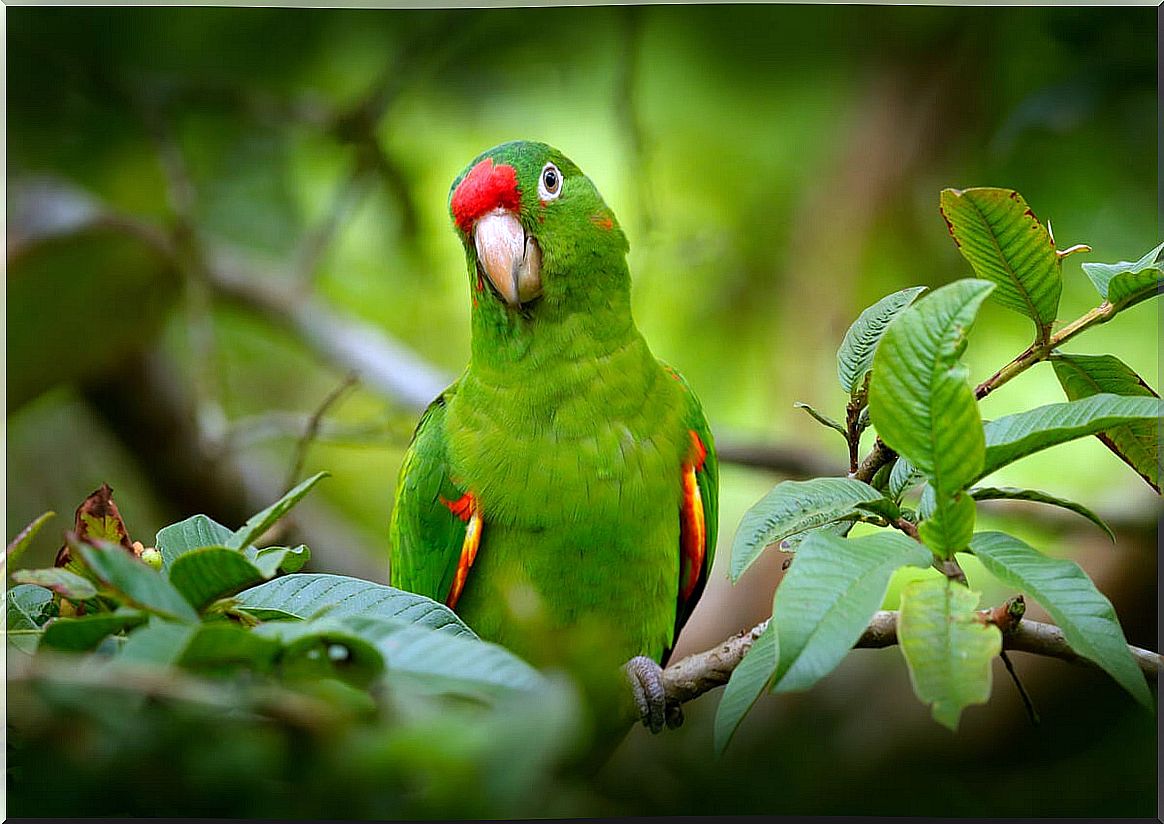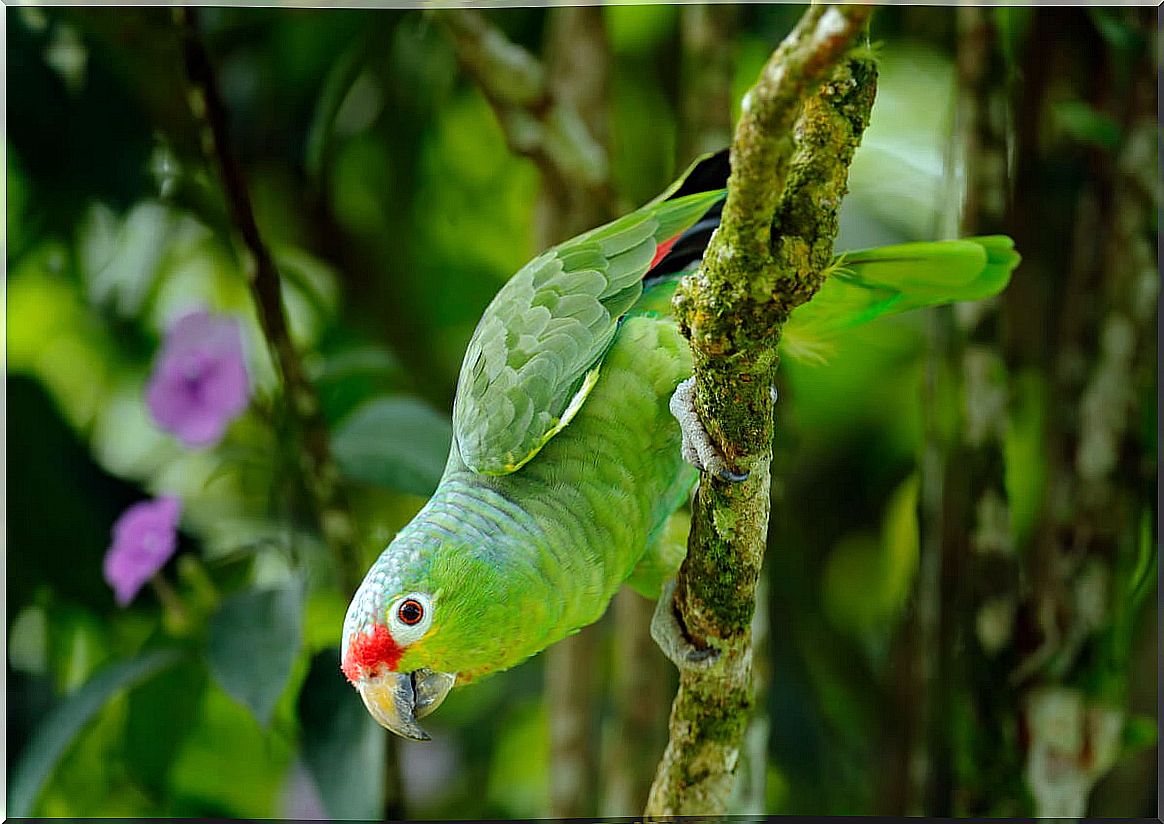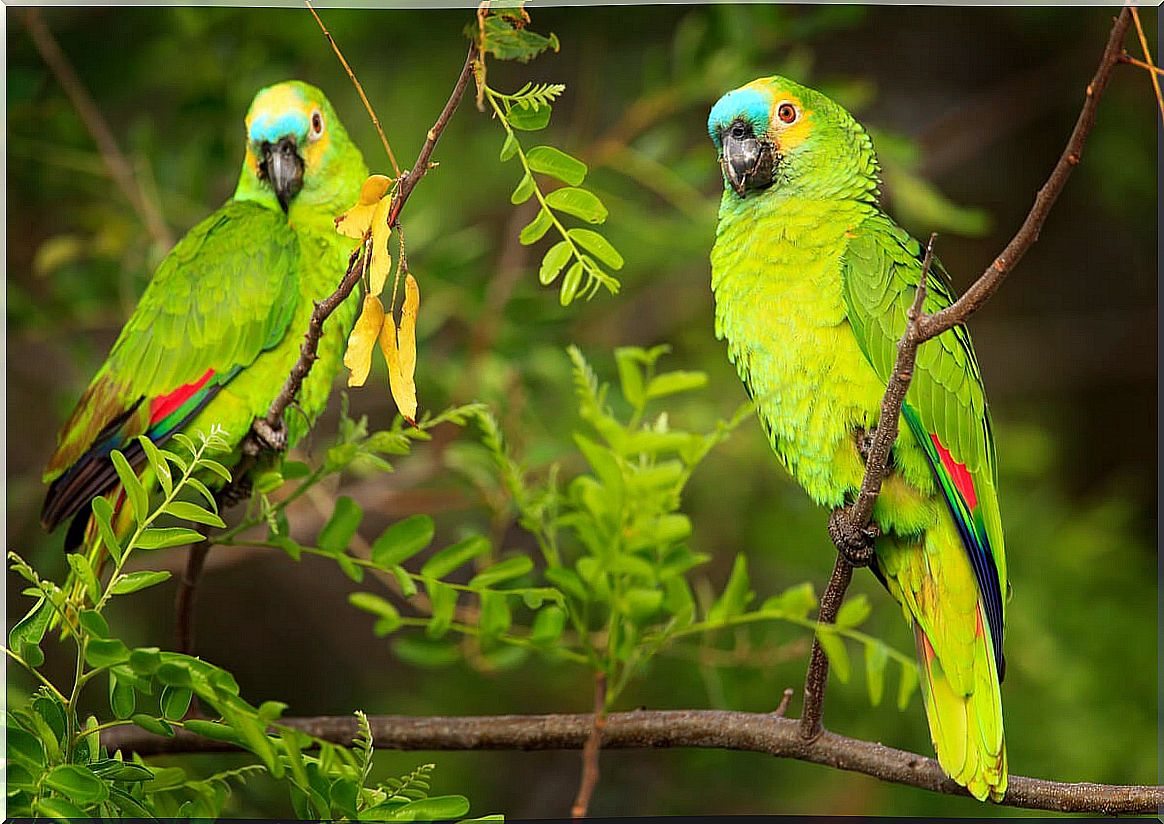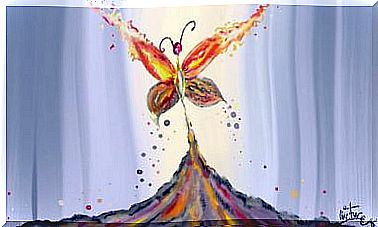The Intelligence Of Parrots

Parrots are known for the ability to mimic human speech. However, the abilities of parrots go much further. In fact, they are compared to that of primates and crows, common standards for advanced cognitive abilities in the non-human realm.
There are many studies that have addressed the different aspects of the intelligence of these birds. As with crows, the size of their brain relative to that of the body is not indicative of their psychic abilities.
In this article, you will learn more about the capabilities of parrots. Although at first glance they do not appear it, their mind is a box of surprises and scientists have been able to verify it. Do not miss it.
The brain of parrots
Intelligence and the brain are related. Although it does not have to be in proportion to the size of the brain, cognitive capacity resides in certain structures and their connections.
For this reason, a team of scientists from the University of Lethbridge (Canada) compared brain samples from 98 different species of birds. The conclusion was revealing: parrots have a highly developed region of the brain that connects the two largest parts of the brain: the cortex and cerebellum.
In birds, this region is called the medial spiriform nucleus, it is in the thalamus and is unique to birds. And, what is more surprising, the structure is equivalent to the one that connects cortex and cerebellum in primates, the pontine nuclei.

Some facts about the intelligence of parrots
What makes the intelligence of parrots comparable to that of a primate? A shared idea is that parrots display complex cognitive abilities such as the following:
- Manufacture of tools.
- Self-recognition in mirror.
- Object permanence.
- Theory of mind.
- Mental travel in time.
- Complex social cognition.
However, research continues to climb the ladder towards even more complex psittacine mental operations. In the following sections, you can learn about some of them.
The intelligence of parrots in statistical inference
A study with the Kea parrot species ( Nestor notabilis ) has revealed that these birds are good at managing probabilities. To do this, they have to be able to make a “statistical inference” with the data they have processed from their experience, which is considered an advanced mental operation.
In the experiments, the parrots went through different modes of exchanging tokens for prizes and ended up always choosing the most efficient way to get rewards. They were able to go the probably best option even with biased experimenters, barriers, and predictions when conditions changed.
They understand and operate with the economy
Experiments in which a prize value is associated with inanimate objects are common in primates. Parrots have also shown the ability to associate intrinsic value with tokens – like a coin – and exchange them for food.
And not only that, but in this experiment the parrots were able to assign three different values to their corresponding tokens and operate with them to maximize the quality of the prizes they obtained. Large macaws performed best at this task.
They show prosocial behaviors
In another 2020 study, the ability of parrots from different species to collaborate with each other for a prize was evaluated. The results could also be compared to those of mammals: the parrots helped their companion to obtain the prize, even if they did not receive one themselves, which is known as prosocial behavior.
In this study, reciprocity was also evidenced, since those birds that had received help from their peers later returned the favor selflessly. Interestingly, the gray macaws were much more altruistic than the blue macaws in the experiment.

They are also left-handed or right-handed
Laterality is also present in non-human species. Although it can be observed in most animals, it is much more present in those species that have to manipulate objects or create tools.
An experiment published in 2009 showed that laterality in parrots had an adaptive function: mastering different tasks with one leg and allowing specific areas of the bird’s brain to specialize. Those parrots that were strong left- or right-handed outperformed those that were not in the performance of the tasks.
The intelligence of parrots is further proof that not all animals are what they appear. Observing them and learning from them does nothing but surprise one after another, and surely many more await with other species.









